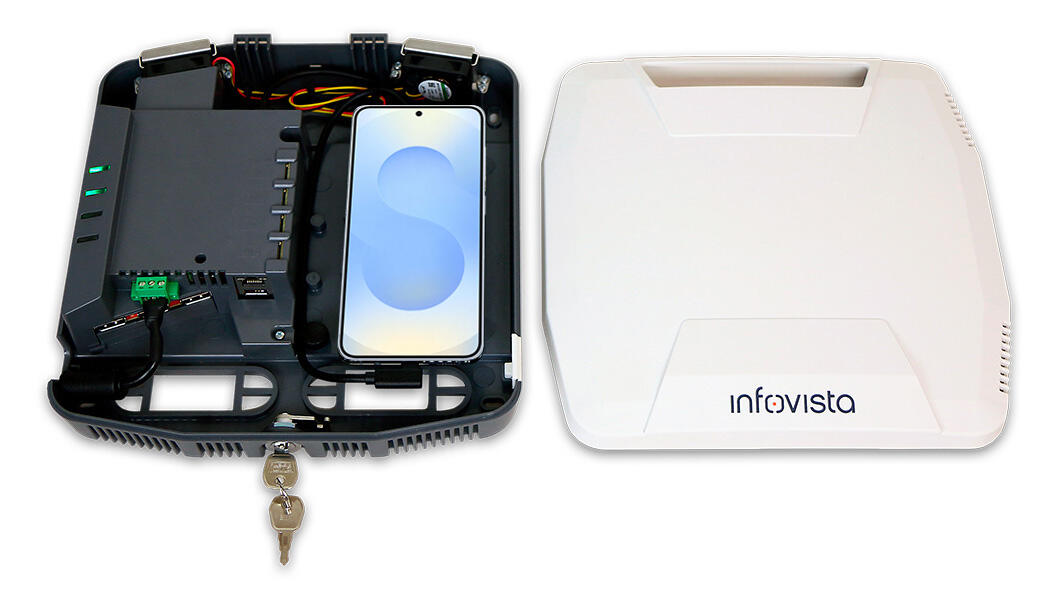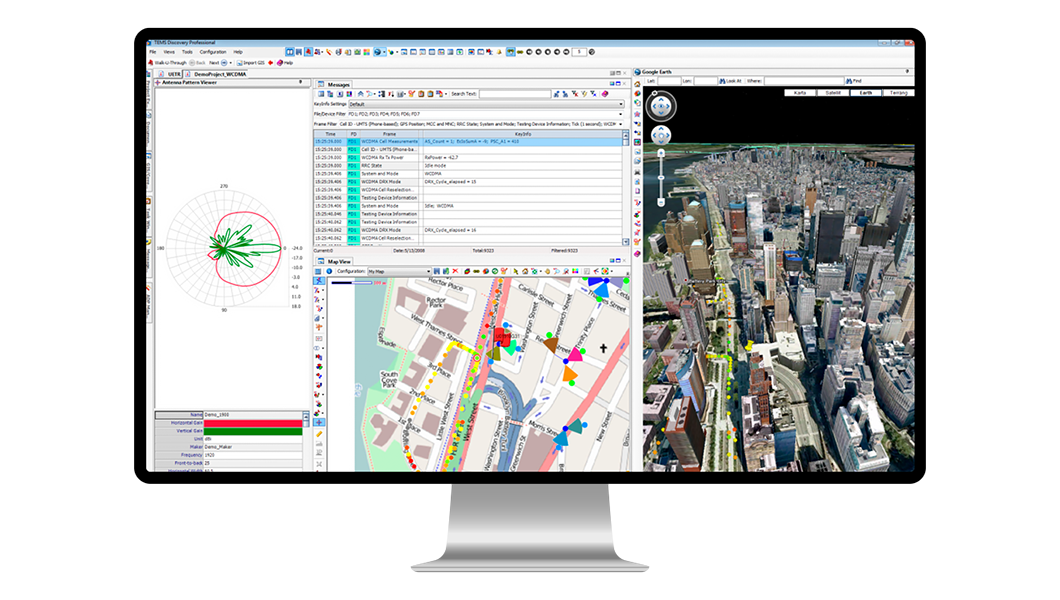The rapid pace of evolution in 5G services, coupled with the accelerating pace of network rollouts, makes 5G network optimization and the constant effort to improve the network an ongoing challenge. Held accountable for essential network KPIs that will define the success or failure of the operator’s 5G investment, the network optimization team is at the forefront of pushing the boundaries of the network’s performance.
They need to be able to:
- Troubleshoot, optimize and tune the end-to-end performance of the entire 5G network, both outdoors and indoors;
- Validate upgrades to the network to ensure continued improvement;
- Benchmark the optimized network to understand how it is performing against competitors.
Effective network optimization requires a comprehensive approach to mobile network performance testing. How can you equip your network optimization team with the unparalleled insight they need into real network performance as it is experienced by subscribers at the device, application and network level?
In this blog, part of our series where we look at the role of different teams within a mobile operator’s organization, we examine how network testing is central to the work of the network optimization team.
What does a 5G network optimization team?
A mobile operator’s network optimization team has responsibility for troubleshooting and tuning the deployed network as well as ongoing validation of network performance as upgrades are made. Ultimately, the team is on the frontline for ensuring the 5G network is meeting, and ideally exceeding, the performance KPIs set by management, mandated by regulators, and expected by subscribers. And, if all isn’t enough, they must do it across a nationwide network that is constantly expanding and in all types of indoor and outdoor environments.
Key network testing requirements for optimizing a 5G network
In their armory, the network optimization team needs drive-testing, portable testing and even drones. They need continuous testing and regression testing. They need detailed analytics and reporting, and, for RAN-sharing, they need to be able to test, benchmark and share information for that too.
Put simply, the network optimization team needs the full kit bag of network testing tools and solutions.
Outdoor drive testing
Mobile network troubleshooting and optimization involves drive-testing both new and existing cell sites to understand the experience your network delivers, identifying and resolving issues, and making informed decisions around future network investments. This requires end-to-end network testing that allows you to validate every new function and feature in your network and how the network performs on the devices your customers are using. This means drive-testing the network using the latest smartphones from all the major manufacturers and testing the most popular over-the-top (OTT) applications which your subscribers are using – for example streaming services such as Netflix and voice and messaging services such as WhatsApp.
Portable indoor testing
With over 80% of all mobile data traffic occurring indoors, the in-building performance of your network can make or break your subscribers’ mobile experience. From the high-rise offices of key enterprise clients to high-footfall shopping malls, it is vital that you can verify, optimize and troubleshoot your indoor mobile network coverage with optimal efficiency.
Drone testing
Mobile network testing can be difficult if your coverage area has limited accessibility. But just because validating network coverage across an industrial site can be dangerous or along popular a tourist beach can be slow, the network testing must still be done. These hard-to-test locations are often high revenue generators, with premium enterprise customers, or a lot of potential inbound roaming revenue. You require advanced testing capabilities that provide actionable insights to improve your subscribers’ mobile experience.
Network benchmarking
To provide a competitive network, you need to measure subscriber experience across different network technologies, handsets, and services. But more than that, you need to be able to benchmark your network performance against that of your competitors. Only then can you be confident that your network is performing to its true potential and delivering a subscriber experience that is truly market-leading.
Regression testing
When making changes to your network, you must ensure all your services continue to perform reliably and without any degradation. Deploying active testing devices in key strategic locations such as stadiums, airports and shopping malls makes it possible to validate network upgrades, new feature activations, and any other changes that are made to the network.
Continuous testing done at these fixed locations provides a perfect baseline to confirm network changes have not adversely affected the network (or that they have improved it as intended), and it is easy to see if changes have degraded performance.
Centralized management of network testing
Whether it’s configuring drive test routes, monitoring remote network test equipment, or managing portable devices in the field; the remote control and management of a fleet of test units can be costly, labor-intensive and inefficient.
It is important that you can orchestrate, monitor and report on your network testing projects while both your network testers and test equipment are in the field. Centralized test fleet management gives you remote oversight of field devices, as well as the real-time data analytics your team needs to efficiently coordinate testing projects.
Analytics and reporting
It can take just as long to manually analyze network testing data, and troubleshoot the issues, as it did to collect it. Whether it’s detailed analysis and reporting for initial tuning and site/cluster acceptance projects or quickly finding what issues are arising where in the network and implementing the solutions needed, speed and accuracy are vital if you are to use network test data effectively to ensure the best possible customer experience.
The key lies in being able to turn network test data into analytics and actionable insights for optimization, at scale and across all your network’s technologies, bands and vendors.
Key features of an effective network testing solution for successful 5G rollouts
The above may read like a laundry list of requirements, but that is the scale of the challenge. It’s pretty daunting. For 5G network optimization to be efficient and effective, it’s therefore important that the network testing processes (drive-, walk- and remote-) being executed in the field are streamlined through integration with centralized orchestration and analytics. By taking a data-led and automated approach to 5G testing, the network optimization process will be not only quicker and more cost-effective, it will also be more accurate and deliver greater insight back into the business.
That’s why operators – such as this tier-one European operator – turn to Infovista and our TEMS ™ Suite of network testing solutions.
If you are looking to troubleshoot new 5G sites, walk test strategic indoor locations, and benchmark your network performance against your competitors, the TEMS portfolio supports every aspect of 5G network optimization.
- TEMS Investigation – Through our partnerships with device and chipset vendors, we support the latest technologies, features and devices your customers are using. This means you can not only reliably test and improve your subscriber quality of experience, but you can also accelerate your 5G roll-out and gain a competitive edge.
- TEMS Pocket – Our phone-based network testing solution allows you to verify, optimize and troubleshoot your mobile network in environments requiring portability, such as malls, stadiums, offices, and areas with limited accessibility where drone-based testing is the best approach.
TEMS Pocket devices mounted on drones enable a single engineer to troubleshoot and optimize a stretch of coastline in minutes.
- TEMS Paragon – Relied on by companies such as Accenture’s umlaut, our network benchmarking solution is highly scalable, enabling you to test multiple use cases across all your competitors in a single drive test. While seamless integration to TEMS Cloud means testing can be managed, controlled and monitored in real-time by engineers back at HQ.
Check how umlaut uses it for its global benchmarking campaigns:
- TEMS Sense – Meanwhile, your network optimization team can use active monitoring to benchmark network upgrades. By using continuous testing at fixed locations to provide a perfect baseline, they can regression test and confirm network upgrades and new feature activations have not adversely affected performance.

- TEMS Cloud – Back at HQ, your network optimization team can remotely and centrally control the fleet of TEMS testing probes, including both TEMS Paragon and TEMS Sense, to efficiently manage both benchmarking and continuous location.

- TEMS Discovery – Finally, our network testing post-processing and analytics solution enables you to quickly find what issues are arising where in the network and accurately and efficiently implement the solutions needed.

Ensuring you always hit your 5G network performance KPIs
Network performance KPIs aren’t just feeds and speeds, they are how your subscribers experience your network, the applications and services you deliver, and the devices you support. By adopting this comprehensive approach to mobile network performance testing, your network optimization team can gain unparalleled insight into the end-to-end performance of your outdoor and in-building 5G sites today, how they can be continually improved, and how this performance compares to your peers and competitors.
In our next blog in this ‘Day in the life’ series, we’ll dig into the role of the Network Quality team who find themselves on the front line of customer complaint handling and hold the key to how quickly these complaints are resolved. We’ll look at how network testing enables an operator’s Network Quality team to quickly investigate and escalate network quality complaints before they have a measurable impact on customer churn.
To get a sneak peek, why not read this extended case study of how a major European mobile operator has confronted the challenges of rolling out its nationwide 5G network. You will discover how both the customer’s organization as a whole, and specific teams, successfully overcame their challenges using innovative network testing solutions.
More helpful pages:
- Blog: A day in the life of a mobile operator’s 5G network lab testing team
- Blog: A day in the life of a mobile operator’s 5G network deployment team
- Case study: How a major European MNO uses the TEMS™ Suite to deliver its 5G network
- eBook: Evolving network testing – 12 TEMS™ use cases
- Analyst Report: The evolution from drive testing to multi-level automated testing in 5G (Senza Fili)
- Analyst Report: Frost & Sullivan Market Leadership Award: Global 5G NR Drive Test









